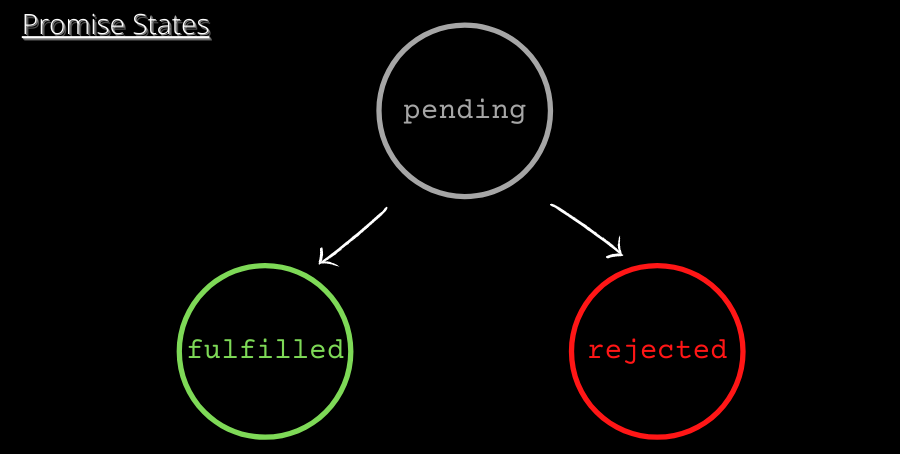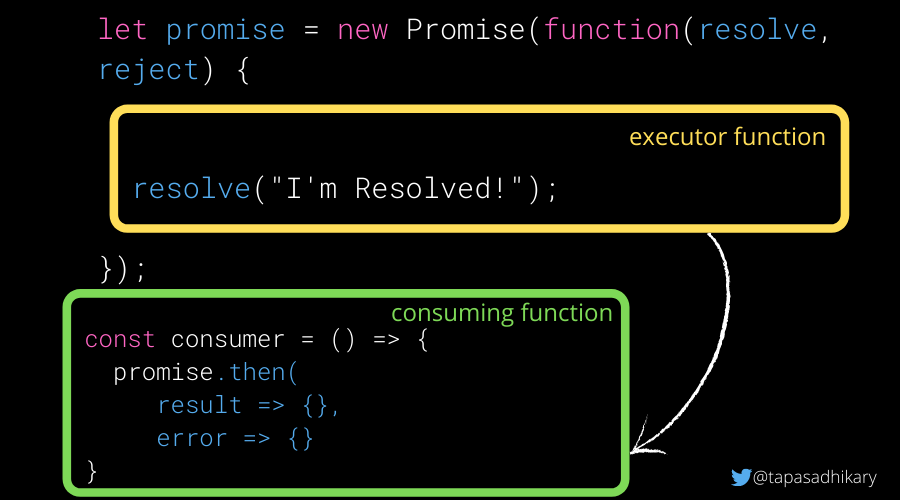What is a Promise in JavaScript?
A Promise in JavaScript is a specialized object that represents the eventual completion (or failure) of an asynchronous operation, and its resulting value. A promise allows you to handle asynchronous code in a more manageable way by providing methods for dealing with success or failure outcomes, such as timeouts or network errors.
Creating a JavaScript Promise
To create a Promise, you use the new keyword, followed by the Promise constructor. The constructor takes a function known as the executor function, which has two parameters: resolve and reject. These methods determine the outcome of the Promise.
Example:
const myPromise = new Promise((resolve, reject) => {
// Perform asynchronous operations here
});
Promise States
A Promise has three distinct states: pending, fulfilled, and rejected. These states represent the lifecycle of a Promise as it progresses through its execution.
- Pending: The initial state when the Promise is still executing.
- Fulfilled: The state when the Promise successfully resolves.
- Rejected: The state when the Promise fails to resolve.
The resolve method is called when the Promise is fulfilled, and the reject method is called when it is rejected.
Example:
const myPromise = new Promise((resolve, reject) => {
if (condition) {
resolve("Promise fulfilled");
} else {
reject("Promise rejected");
}
});

const myPromise = new Promise((resolve, reject) => {
if(condition here) {
resolve("Promise was fulfilled");
} else {
reject("Promise was rejected");
}
});
Handling a Promise

Using the then Method
The then method is invoked when a Promise is fulfilled successfully. It takes a callback function that processes the result of the Promise.
Example:
myPromise.then(result => {
// Handle the successful result
});
Using the catch Method
The catch method is used to handle rejected Promises. It is executed when a Promise is rejected, providing an opportunity to handle errors gracefully.
Example:
myPromise.catch(error => {
// Handle the error
});
Async/Await
The async and await keywords offer a more readable and synchronous approach to handling Promises.
async: Marks a function as asynchronous and automatically returns a Promise.await: Pauses the execution of anasyncfunction until a Promise is resolved.
Async Function
An async function always returns a Promise, regardless of what it returns.
Example:
async function myFunction() {
return "Hello";
}
This is equivalent to:
async function myFunction() {
return Promise.resolve("Hello");
}
Await Keyword
The await keyword causes JavaScript to wait for a Promise to resolve before continuing with the execution of the next line of code. It can only be used inside an async function.
Example:
async function fetchData() {
let promise = new Promise((resolve, reject) => {
setTimeout(() => resolve("Done!"), 1000);
});
let result = await promise; // Wait for the promise to resolve
alert(result); // "Done!"
}
Implementing Promises
Here’s an example of using Promise.all to run multiple promises concurrently. This allows you to wait for multiple asynchronous tasks to finish before proceeding.
Example:
const pr1 = new Promise((resolve) => {
setTimeout(() => resolve("Hello"), 4000);
});
const pr2 = new Promise((resolve) => {
setTimeout(() => resolve("World"), 0);
});
const runPromises = async () => {
try {
const results = await Promise.all([pr1, pr2]);
console.log(results); // ["Hello", "World"]
} catch (error) {
console.error(error);
}
};
runPromises();
Conclusion
JavaScript Promises are a powerful tool for handling asynchronous operations. By understanding how to create and manage Promises, you can write more efficient, readable, and maintainable code. The combination of async and await provides a convenient syntax for working with Promises, offering a more synchronous-like experience while maintaining asynchronous behavior.
References:
